In 1998, the discovery of a child’s skeleton in Portugal’s Lapedo Valley stunned the archaeological world. The remains, a fascinating blend of Neanderthal and human features, raised questions about ancient human evolution and interspecies relationships. For decades, scientists struggled to accurately date the burial, but recent advancements have provided a breakthrough, revealing the child’s age to be around 28,000 years old. This new discovery not only sheds light on the enigmatic hybridization between Neanderthals and early humans but also challenges our understanding of the timeline and complexity of human evolution.
The Discovery of the Lapedo Child
The discovery of the Lapedo Child came as a complete surprise to archaeologists in 1998. While conducting excavations in Portugal’s Lapedo Valley, researchers stumbled upon the remains of a child buried in a rock shelter. This location, rich in prehistoric artifacts, had already yielded numerous findings. However, nothing could have prepared the team for the intriguing blend of features found in the skeleton. The child’s body exhibited a unique mixture of human-like characteristics, such as body shape and limb proportions, along with distinctly Neanderthal features, like a pronounced jaw and skull shape.
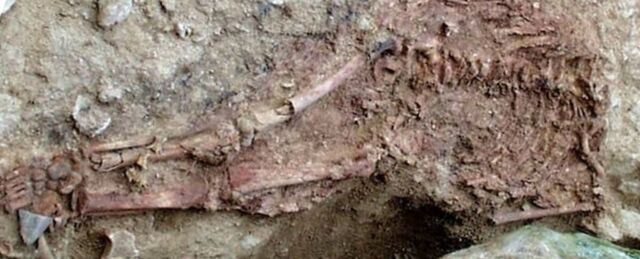
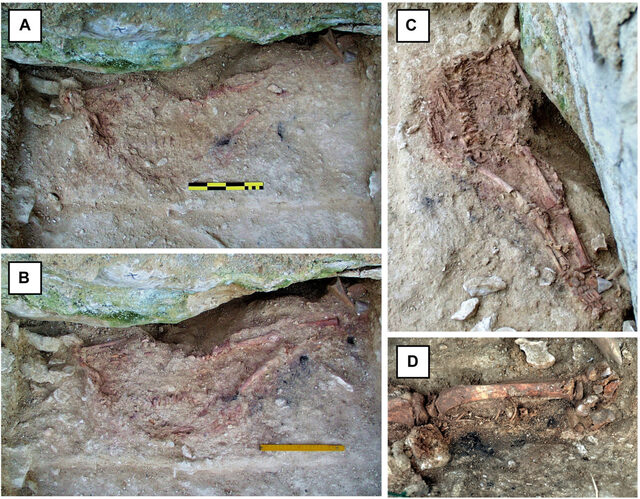
The discovery quickly raised questions: Could this be evidence of interbreeding between Neanderthals and early humans? And if so, what did it mean for our understanding of human evolution? Initially, there was no clear answer. At the time, the idea that Neanderthals and humans had interbred was far from universally accepted, and it would take years of painstaking analysis to reveal the truth about the Lapedo Child’s origins.
Video
Watch the video about the mystery of the human-Neanderthal child from Portugal, finally solved with new dating technology.
The Controversial Features of the Lapedo Child
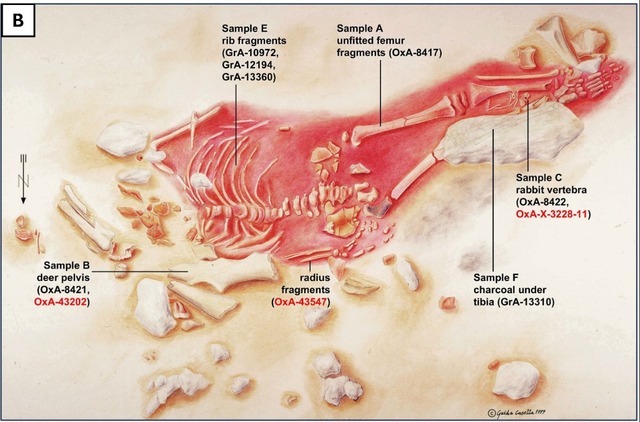
The most striking aspect of the Lapedo Child’s remains is its mix of Neanderthal and human traits. While the overall body structure was similar to that of modern humans, the skull and jaw exhibited distinct Neanderthal characteristics. For example, the child’s occipital bone at the back of the skull was pitted, a feature commonly found in Neanderthals. Additionally, the child’s limb proportions closely resembled those of Neanderthals, rather than modern humans.
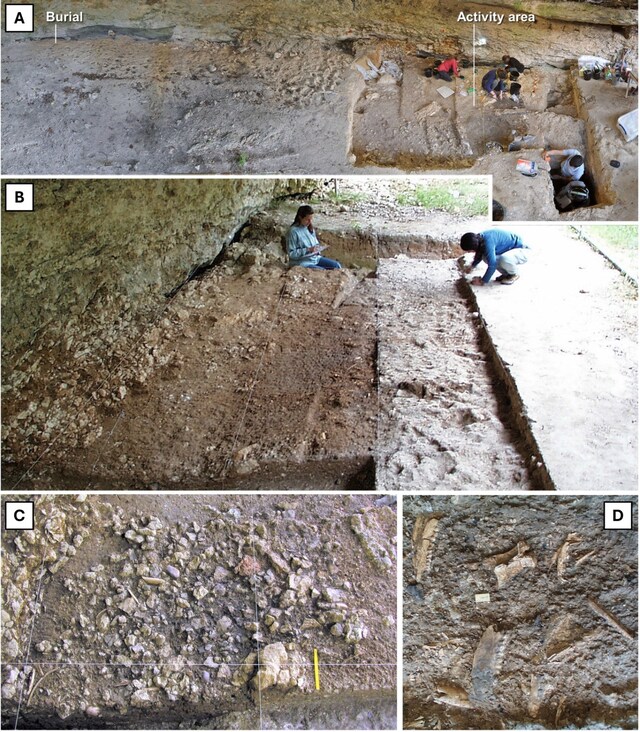
This combination of traits was unlike any other skeletal remains previously discovered and sparked a debate within the scientific community. Could this child be the product of a hybridization event between humans and Neanderthals? Or was the child simply an example of the complex and gradual evolution of Homo sapiens in the wake of Neanderthal extinction? The lack of direct genetic evidence made it difficult to reach a conclusion, and the hybrid theory remained speculative for many years.
The Breakthrough in Radiocarbon Dating
The mystery surrounding the Lapedo Child remained unsolved for years, in part due to difficulties in dating the bones accurately. The initial attempts to date the remains were unsuccessful, as the bones had been exposed to various environmental factors that caused significant degradation. However, new technological advances and innovative methods in radiocarbon dating finally allowed scientists to achieve a breakthrough.
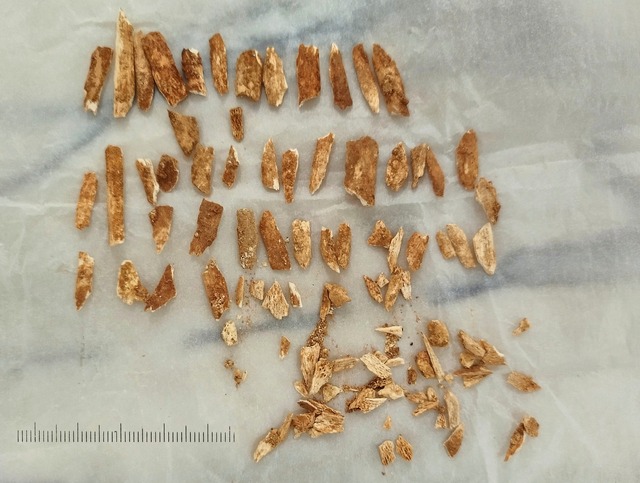
In 2025, researchers succeeded in dating the child’s remains using a method that involved measuring the decay rate of hydroxyproline, an amino acid found in collagen. This technique, which is especially effective for dating degraded bones, provided a much clearer picture of when the child lived. According to the results, the child was buried between 27,780 and 28,550 years ago, placing the burial firmly in the Upper Paleolithic period—long after Neanderthals had disappeared, but within the timeframe when Homo sapiens and Neanderthals were likely still interbreeding.
Neanderthal and Human Interbreeding: A New Insight
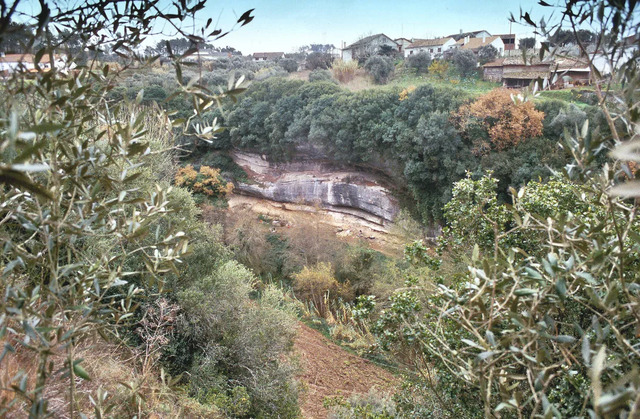
The re-dating of the Lapedo Child provides new insight into the complex relationship between Neanderthals and Homo sapiens. For years, it was believed that Neanderthals had gone extinct long before modern humans appeared. However, genetic evidence from the sequencing of the Neanderthal genome revealed that humans and Neanderthals interbred for thousands of years, leaving behind traces of Neanderthal DNA in many people of non-African descent today.
The Lapedo Child, with its blend of both Neanderthal and human features, suggests that interbreeding may have occurred much later than previously thought. It raises the possibility that the hybridization between Neanderthals and early humans was not a singular event, but rather part of a more gradual process. The discovery of the Lapedo Child’s hybrid traits also suggests that the interaction between the two species may have been more complex and widespread than we have realized.
The Burial Context: Rituals and Remains
One of the most intriguing aspects of the Lapedo Child’s discovery is the burial context. The child’s remains were found in a rock shelter surrounded by a variety of animal bones, including those of a red deer and rabbits. The bones, which were stained with ochre, appeared to have been intentionally placed around the child, possibly as part of a burial ritual. The presence of these animal remains, along with the use of ochre, indicates that the burial was likely a ceremonial event.
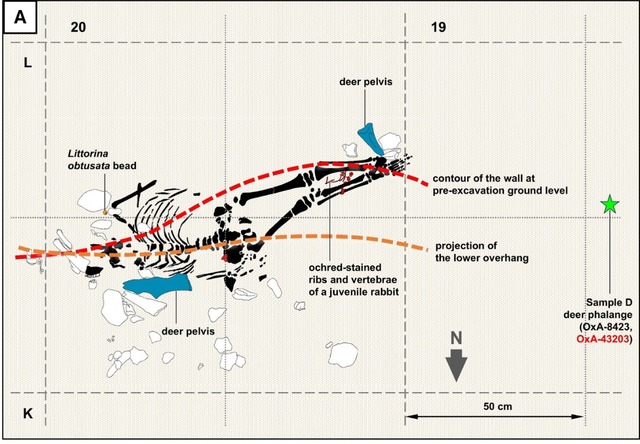
Interestingly, the charcoal found at the site was much older than the child, further complicating the interpretation of the burial. It suggests that the burial was not an isolated event but part of a broader ritualistic practice that may have been carried out over generations. The unusual combination of human and animal remains adds an additional layer of mystery to the site and provides further evidence that the people who buried the child held complex beliefs about death and the afterlife.
Red Deer, Rabbits, and Charcoal: Clues to the Burial
The discovery of animal remains alongside the Lapedo Child has led to important insights about Neolithic burial practices. The red deer and rabbit bones found at the site suggest that these animals may have played a symbolic role in the burial. The presence of red ochre stains on the bones could indicate that the animals were placed at the site as part of a ritual offering. Some researchers speculate that the animals might have been part of a ceremonial act designed to honor the deceased.
The charcoal found at the site, although older than the child’s remains, may have also been a significant part of the ritual. It could indicate the use of fire in the burial process, perhaps as a way to purify the body or as part of a religious rite. These findings shed new light on the social and spiritual practices of early humans and offer a glimpse into the ways in which our ancestors dealt with death and the afterlife.
Legacy of the Lapedo Child and Hybrid Hominins
The Lapedo Child’s discovery is part of a broader pattern of hybridization between human and Neanderthal populations. In recent years, other evidence of hybrid hominins has been uncovered, including the discovery of a child in Russia in 2012 who had both Neanderthal and Denisovan ancestry. These findings suggest that human evolution is much more complex than we once believed, with multiple hominin species interacting and interbreeding over thousands of years.
The Lapedo Child remains one of the most compelling pieces of evidence of this hybridization. While DNA analysis from the child’s remains has not yet confirmed the hybrid theory, the combination of Neanderthal and human features makes it an intriguing case study in the ongoing search for answers about our evolutionary past.
Video
Watch the video from BBC News about a skeleton revealing that early humans had sex with Neanderthals.
Conclusion: Revising the Story of Human Evolution
The dating of the Lapedo Child’s remains marks a major milestone in the field of archaeology and human evolution. This discovery provides valuable insights into the complex relationship between Neanderthals and Homo sapiens, suggesting that the two species may have interacted and interbred far later than previously believed. The child’s unique combination of human and Neanderthal features challenges our understanding of early human history and forces us to reconsider the traditional narrative of human evolution.
As technology advances and more discoveries are made, the story of human evolution will continue to unfold. The Lapedo Child serves as a reminder that our past is not a simple story of progress and survival but a complex web of interactions, migrations, and shared histories that shaped the human species as we know it today.



